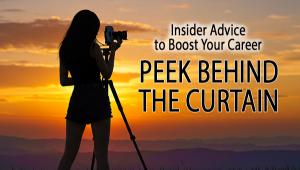Selling Your Photography At Art Shows
Two Experienced Pros Tell You How
You've been taking pictures for years. You show your prints to friends and family members and they constantly give you positive feedback and tell you how much they love your photography. Perhaps you've thought about selling your pictures professionally, but how do you begin? We will guide you through the process of marketing your photographs at the thousands of juried art shows that take place around the U.S.A. Fine Art Festivals |
|||
Getting Started Selecting Your Best
Work |
|||
Preparing Your Photographs
For Exhibit |
|||
Print Presentation Getting Supplies To Frame Or Not To
Frame Choosing Shows Creating Your Jury
Slides The Application Process
Showing Your Photographs Weatherwise Getting It All To The
Show Chris Maher and Larry Berman
are photographers, writers, and web designers, specializing in image intensive
photography sites. For a detailed list of resources visit their web sites
www.ArtWebWorks.com
and www.BermanGraphics.com.
Tip Sheet |




















































